Vail, Colorado 作者: 来源: 发布时间:2021-07-20
I.Population and Area
₋Area
Land: 4.72 sq mi (12.23 km2)
₋Population
Total: 1,154.70/sq mi (445.86/km2)
Density: 5,305
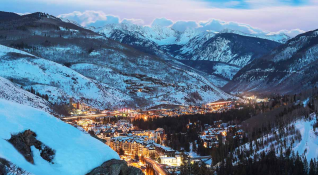
II.Natural Geography
₋City View & Street View
₋Vail is a home rule municipality in Eagle County, Colorado, United States. The population of the town was 5,305 in 2010. The town, home to Vail Ski Resort, the largest ski mountain in Colorado, is known for its hotels, dining, and for the numerous events the city hosts annually, such as the Vail Film Festival, Burton US Open, Vail Resorts Snow Days, and Bravo! Vail.
₋Vail's average elevation is 8,150 feet (2484 m) above sea level. The town has a total area of 4.5 square miles (12 km2), with no lakes (there is, however , at least one pond). Gore Creek flows from east to west through the center of town.
₋The town is surrounded by the White River National Forest and the Vail Ski Resort is leased from the United States Forest Service. Mount of the Holy Cross is visible from Vail Mountain.
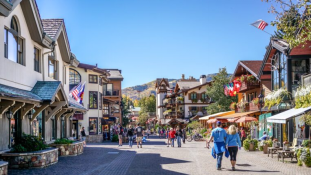
III.GDP
₋The average salary in Vail, CO is $58k. Trends in wages decreased by -100.0 percent in Q1 2020. The cost of living in Vail, CO is 100 percent higher than the national average. The most popular occupations in Vail, CO are Event Manager, Sous Chef, and Operations Manager which pay between $39k and $103k per year. The most popular employers in Vail, CO are Vail Valley Medical Center, Vail Resorts, Inc., and Steadman Philippon Research Institute.
₋Website: https://www.payscale.com/research/US/Location=Vail-CO/Salary
IV.Industrial Characteristics
₋The Vail economy relies on tourism. While much of the industry is based on winter sports, Vail is also a summer resort and golfing center. Summer activities include guided hikes, mountain biking, horseback riding, carriage rides and fishing. Vail is also developing as a cultural center, with various art and music venues active throughout the summer. The town has a developed culinary center, with a variety of restaurants.
V.Attractions
1.Betty Ford Alpine Gardens
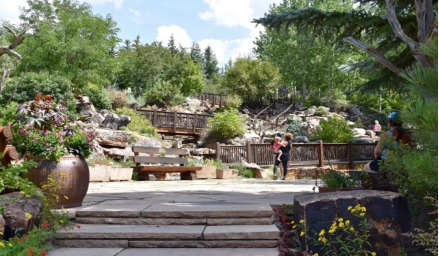
₋The Betty Ford Alpine Gardens are the world's highest botanical garden, located at 183 Gore Creek Drive, Vail, Colorado, United States, at an 8,200 feet (2,500 m) altitude in the Rocky Mountains. The Gardens are open to the public year-round.
₋The Gardens were founded by Vail and Denver horticulturists in 1985, with subsequent planting of the Alpine Display Garden (1987), Mountain Perennial Garden (1989), Mountain Meditation Garden (1991), and the Alpine Rock Garden (1999) with its stunning 120-foot waterfall. Other gardens include the Children's Garden and Schoolhouse Garden. Together these gardens contain about 2,000 varieties of plants, including over 500 different varieties of wildflowers and alpine plants.
₋It is open daily; admission is free.
₋Address: 522 S Frontage Rd E, Vail, CO 81657, United States
₋Phone: +1 970-476-0103
₋Website: https://bettyfordalpinegardens.org/
2.Vail Ski Resort
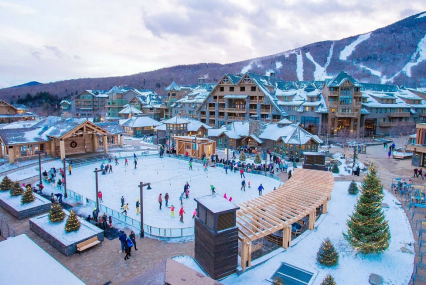
₋Vail Ski Resort is a ski resort located near the town of Vail in Eagle County, Colorado. At 5,289 acres (8.3 sq mi; 21.4 km2), it is the third-largest single-mountain ski resort in the United States, behind Big Sky and Park City, featuring seven bowls and intermediate gladed terrain in Blue Sky Basin.
₋Vail opened in 1962 and is one of 37 mountain resorts owned and operated by Vail Resorts, which also operates three other nearby ski resorts (Beaver Creek, Breckenridge, and Keystone).
₋Vail Mountain has three sections: The Front-Side, Blue Sky Basin, and the Back Bowls. Most of the resort is wide open terrain with all types of trails. There are cruising runs accessible from most front side and Blue Sky Basin lifts, as well as the wide open Back Bowls, glades, and chutes.
₋Vail has the fourth-largest area of skiable terrain in North America after Whistler Blackcomb, Powder Mountain, and Big Sky.
₋Vail Village is modeled on Bavarian village styles, with pedestrian streets. Unlike other Colorado ski towns such as Aspen, Breckenridge, or Steamboat Springs, which existed as 19th century mining towns prior to the establishment of their ski resorts, the Vail village was built when the resort opened.
₋Address: Vail, CO 81657, United States
₋Phone: +1 970-754-8245
₋Website: https://www.vail.com/
₋
3.Piney River Ranch
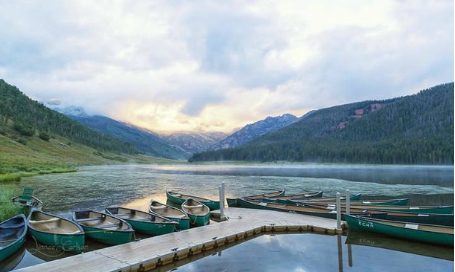
₋Piney River Ranch is Vail, Colorado’s most breathtaking destination for weddings, retreats, day-trips and reunions.
₋Set on the edge of Piney Lake, and nestled at the foot of the majestic Gore Range, Piney River Ranch is a private, forty-acre Rocky Mountain retreat, long known as a favorite wedding and day-trip destination. We are located just twelve miles north of Vail Village, surrounded by thousands of acres of back country wilderness within the White River National Forest.
₋Address: 700 Red Sandstone Rd, Vail, CO 81657, United States
₋Phone: +1 303-905-4439
₋Website: https://www.pineyriverranch.com/
VI.History
₋Vail was incorporated in 1966, four years after the opening of Vail Ski Resort. The ski area was founded by Pete Seibert and local rancher Earl Eaton in 1962, at the base of Vail Pass. The pass was named after Charles Vail, the highway engineer who routed U.S. Highway 6 through the Eagle Valley in 1940, which eventually became Interstate 70. Seibert, a New England native, served in the U.S. Army's 10th Mountain Division during World War II, which trained at Camp Hale, 14 miles south of Vail between Red Cliff and Leadville. He was wounded in Italy at the Battle of Riva Ridge but went on to become a professional skier after he recovered.
₋Seibert, with other former members of the 10th Mountain Division, returned to Colorado after World War II with the intention of opening a ski resort. During training for ski troopers at Camp Hale, he bivouacked on Vail Mountain and identified it as an ideal ski mountain. In the early 1960s, Seibert got funds from a group of Colorado investors, including Jack Tweedy, and with Earl Eaton bought a ranch at the base of the mountain and eventually incorporated as Vail Associates. As plans continued for a new ski resort, Seibert hired Morrie Shepard as Vail's first ski school director. Shortly after, Shepard recruited Rod Slifer from Aspen to be assistant ski school director. Slifer also became the only real estate broker in the early years of Vail and would later be the broker in the transaction that allowed Vail to buy a ranch, now known as the world-famous Beaver Creek.
₋In December 1962 Vail officially opened for its first season. It operated a gondola lift and two ski lifts on the mountain owned by the United States Forest Service. The village was established at the base of the mountain for local residents and offered lodging for visitors. It quickly grew throughout the valley with housing added first in East Vail and then West Vail, and additional lodging added in Lionshead in the late 1960s.
₋Within the first year the village had a ski shop operated by Dick Hauserman and Joe Langmaid, a ski boutique operated by Blanche Hauserman and Bunny Langmaid, a hotel and restaurant operated by Pepi Gramshammer, and the mountain had a manager. By 1969 Vail was the most popular ski resort in the state. In 1988 Vail opened China Bowl, making Vail the third largest ski area in North America.
VII.Other Information
₋Transportation
₋Vail is served by Eagle County Airport near Gypsum, 30 miles (48 km) to the west. Native Americans used to call the area near the airport the "hole in the sky" because storms seemed to avoid it. Vail is modeled on European ski towns, many of which are car-free, and the town is partially pedestrianized. The town operates the largest free shuttle bus system in the United States and has ten hybrid-electric buses. At each bus stop, a sign reports when the next two buses will arrive.
₋The in-Town Shuttle provides service every five minutes during peak winter times, and every 15 minutes off-peak, between Golden Peak, Vail Village, the business district, and Lionshead, with live schedule information provided at bus stops by Global Positioning System technology, which tracks buses. Other routes centering on the Transportation Center service the East and West Vail districts on a scheduled, but less frequent basis.
₋Eagle County provides bus service from the Transportation Center with service to Vail, Leadville, Minturn, Eagle-Vail, Avon, Beaver Creek, Edwards, Eagle, Gypsum and Dotsero.
₋The Colorado Department of Transportation, though its Bustang program, provides intercity transportation to Vail along its West Line. The West Line goes from Denver to Grand Junction and back.
₋Highways
₋Interstate 70 runs east–west through the middle of Vail and is the only road to or from Vail, with exits at East Vail, at the base of Vail Pass, the town of Vail, and West Vail. From the east, the highway comes from Denver, 97 miles (156 km) away, passes through Eisenhower Tunnel and over the Continental Divide, by-passing Loveland Pass, and over Vail Pass, dropping down into Vail Valley. To the west, it meets U.S. Highway 24 at Dowd Junction, passes through Avon, Edwards, Colorado, and Eagle, through Glenwood Canyon traveling and on to Grand Junction, and reaches Utah, where it ends at the intersection with Interstate 15.
₋In West Vail, U.S. Highway 6 (which still exists as a service road between East Vail, Vail, and West Vail) merges with I-70 at Dowd Junction. I-70 roughly follows the original Highway 6 route until the two highways diverge again in Silverthorne, 31 miles (50 km) to the east.
VIII.Contact Information
₋Government
• Type: Home Rule Municipality
• Mayor: Dave Chapin
₋City Hall
₋Phone: 970-479-2100
₋Email: info@vailgov.com
₋Fax: 970-479-2157
₋Location:
75 South Frontage Road
Vail, Colorado 81657
₋Website: https://www.vailgov.com/contact
